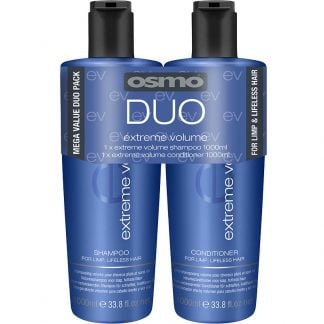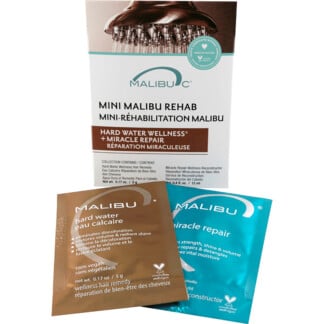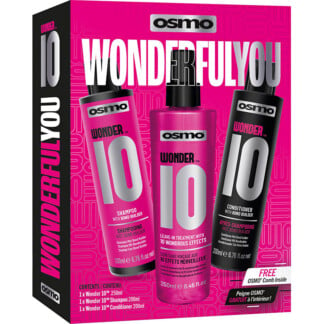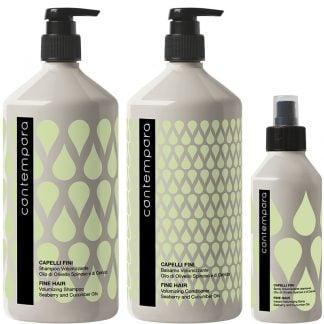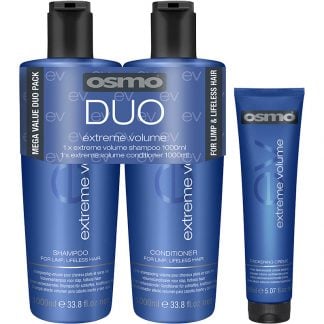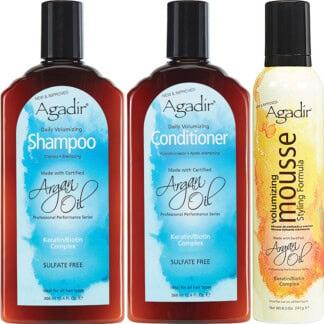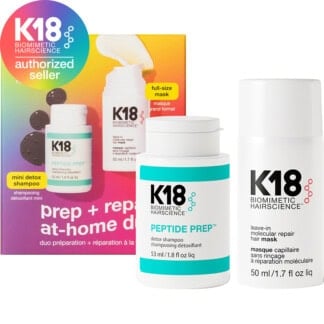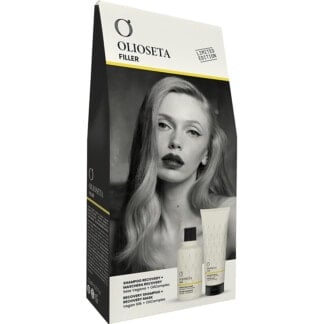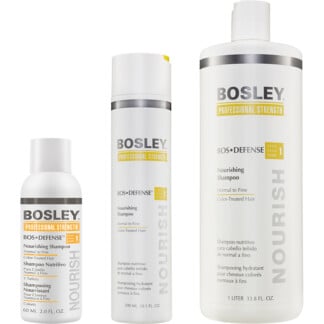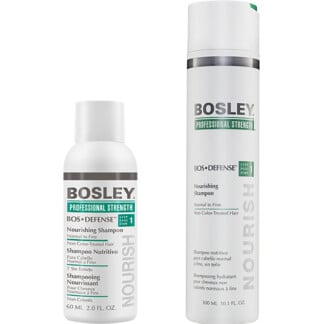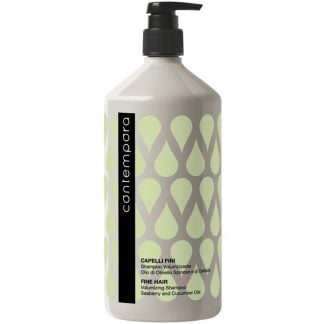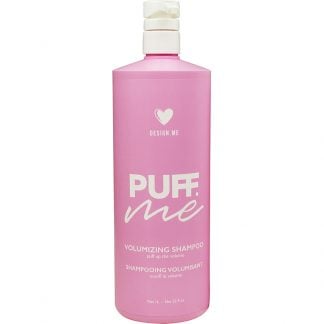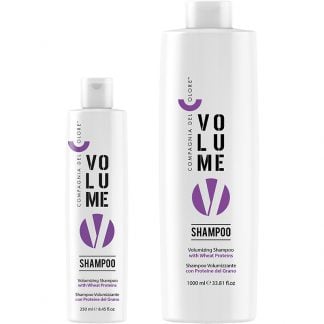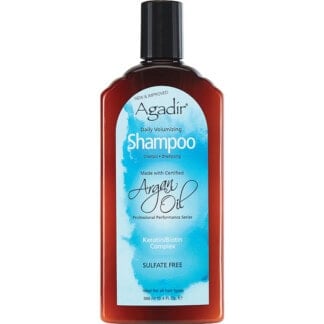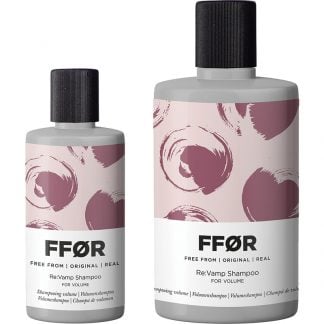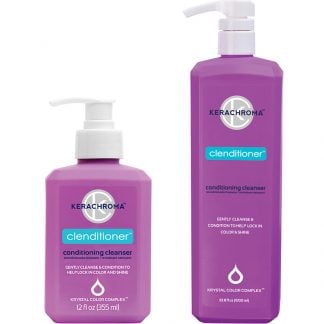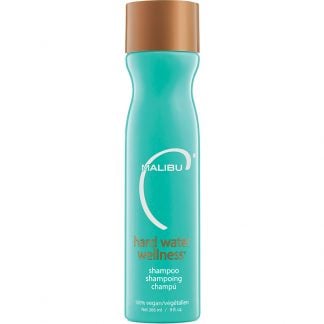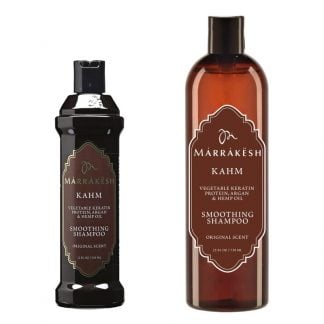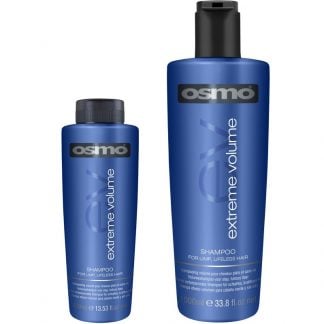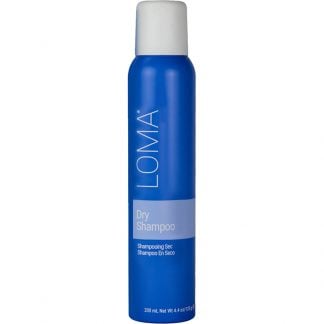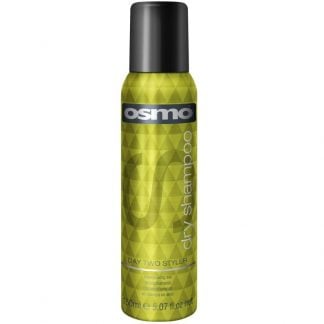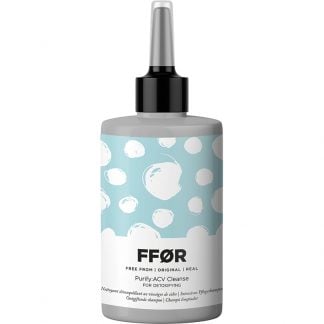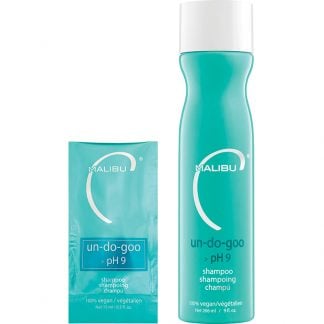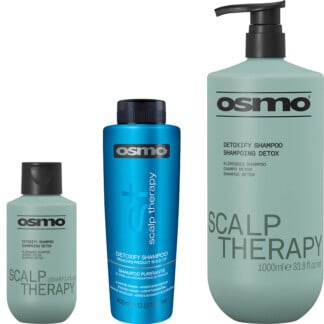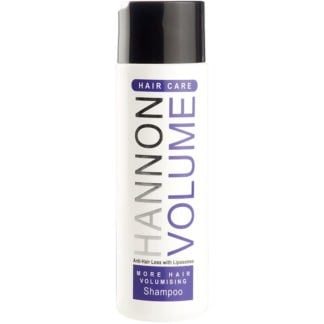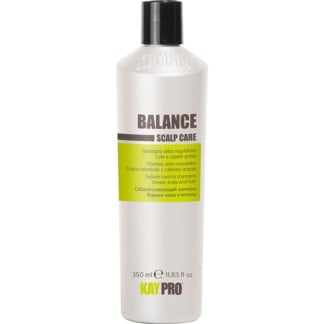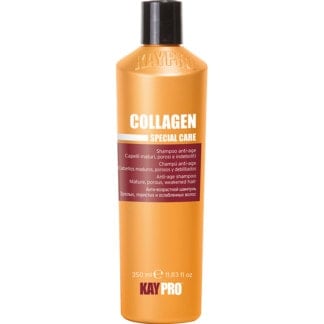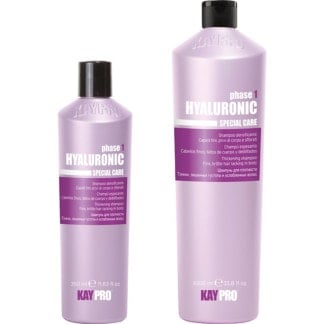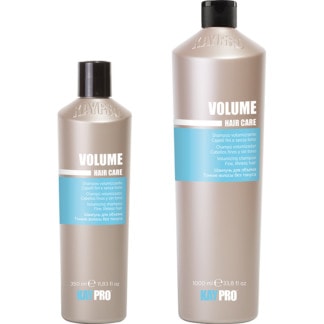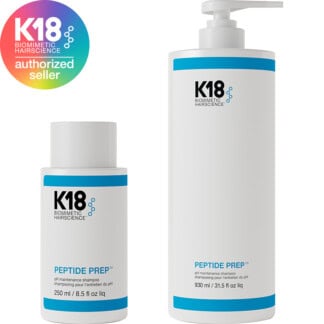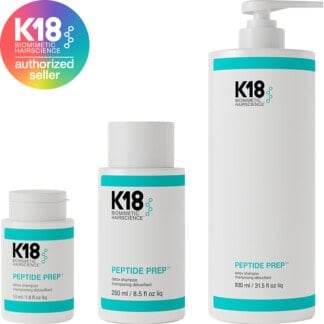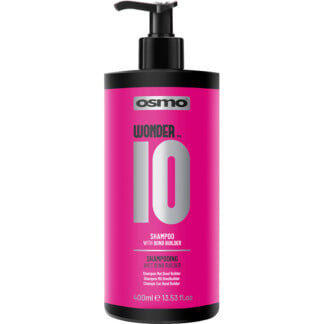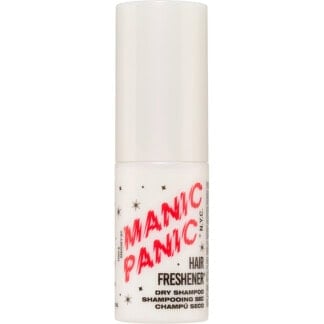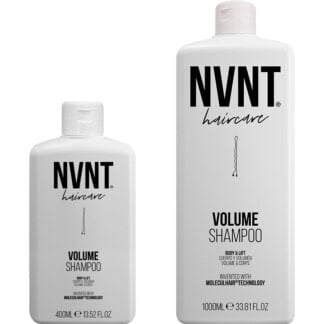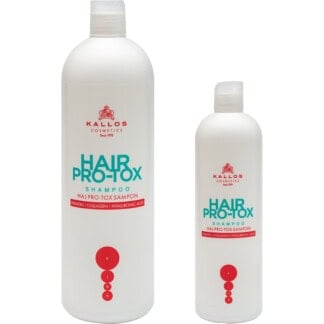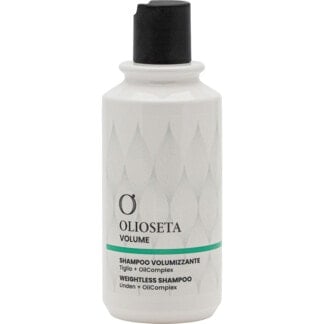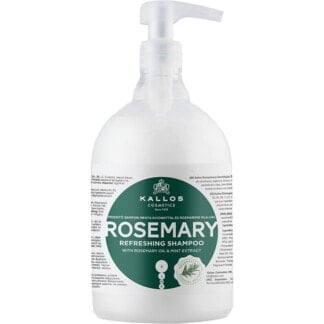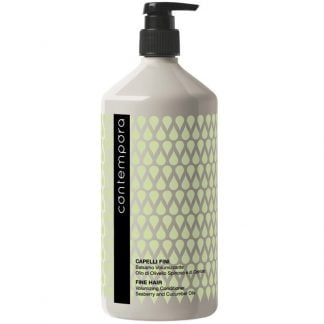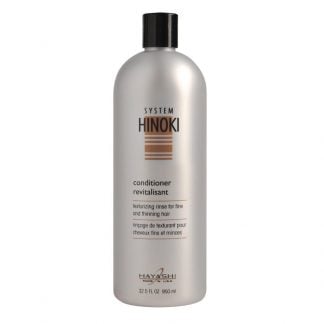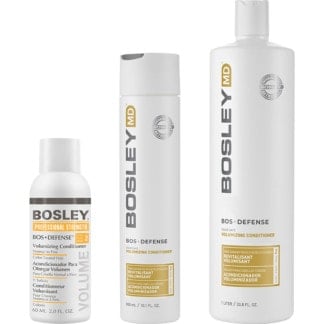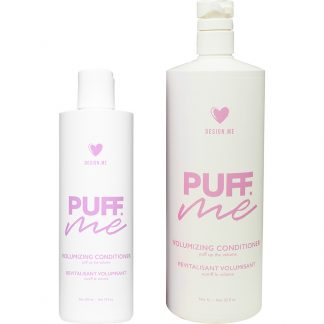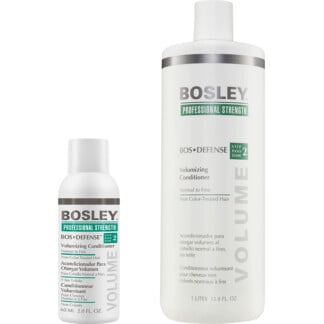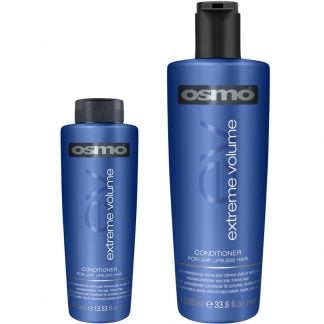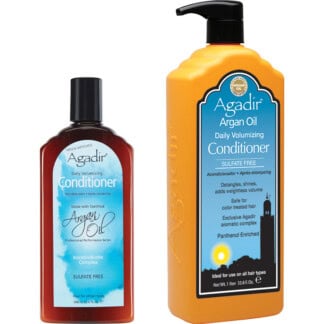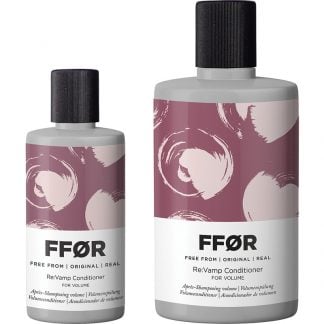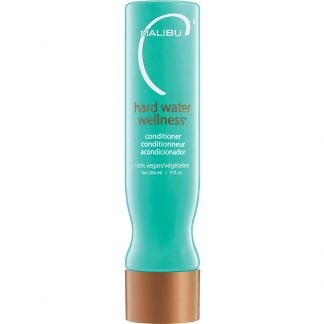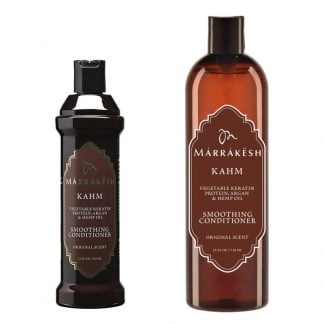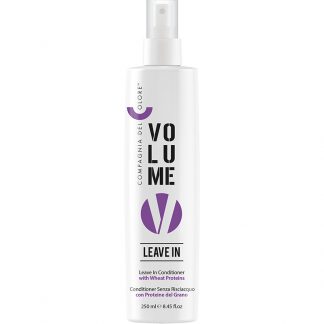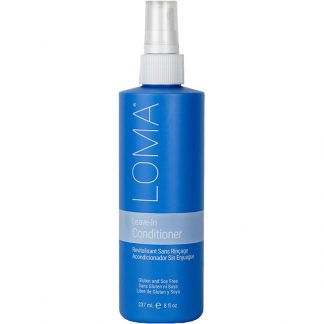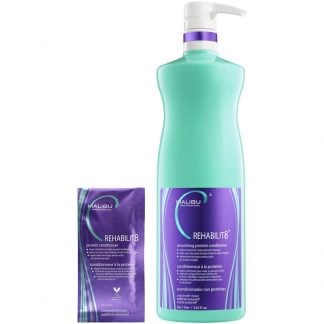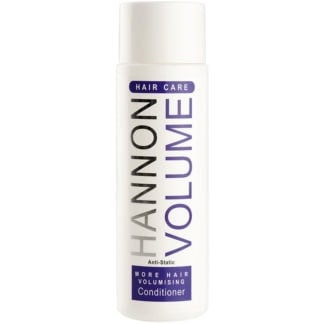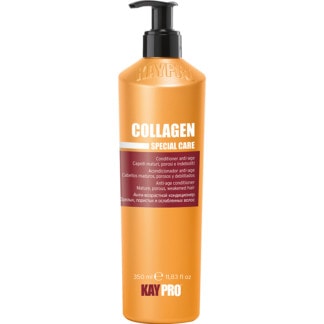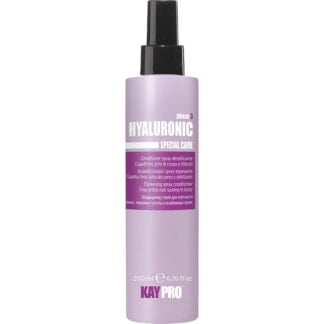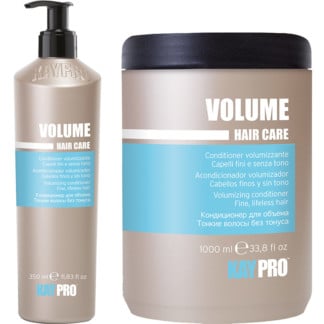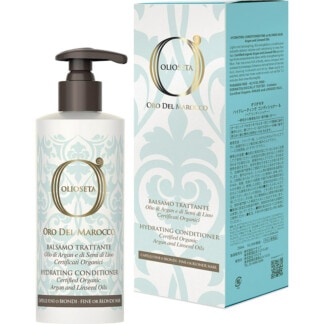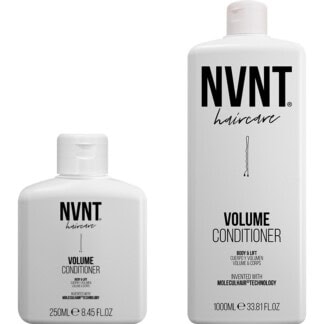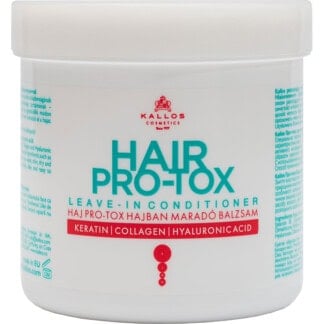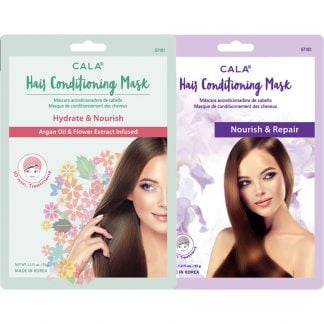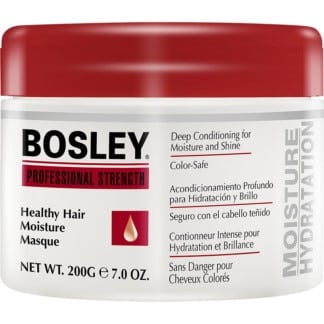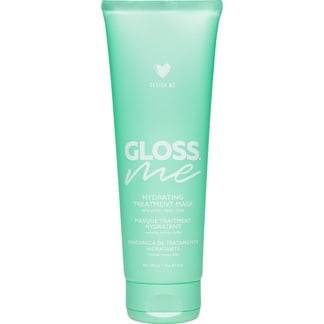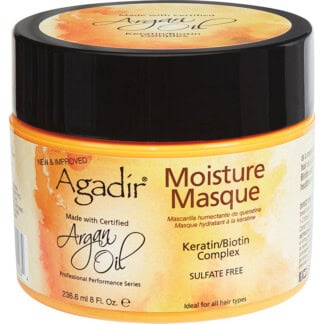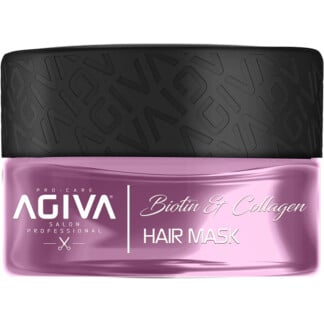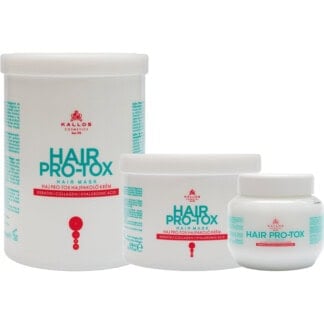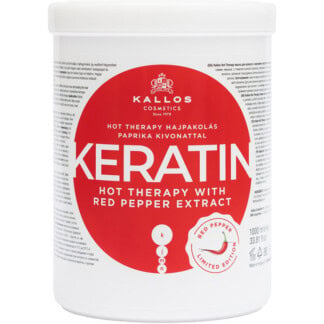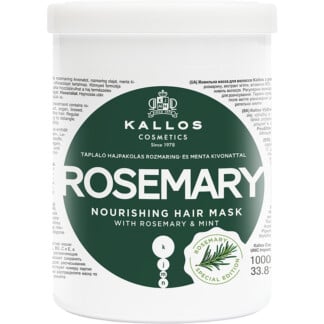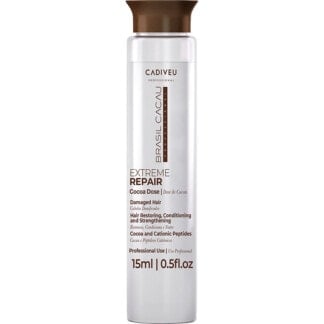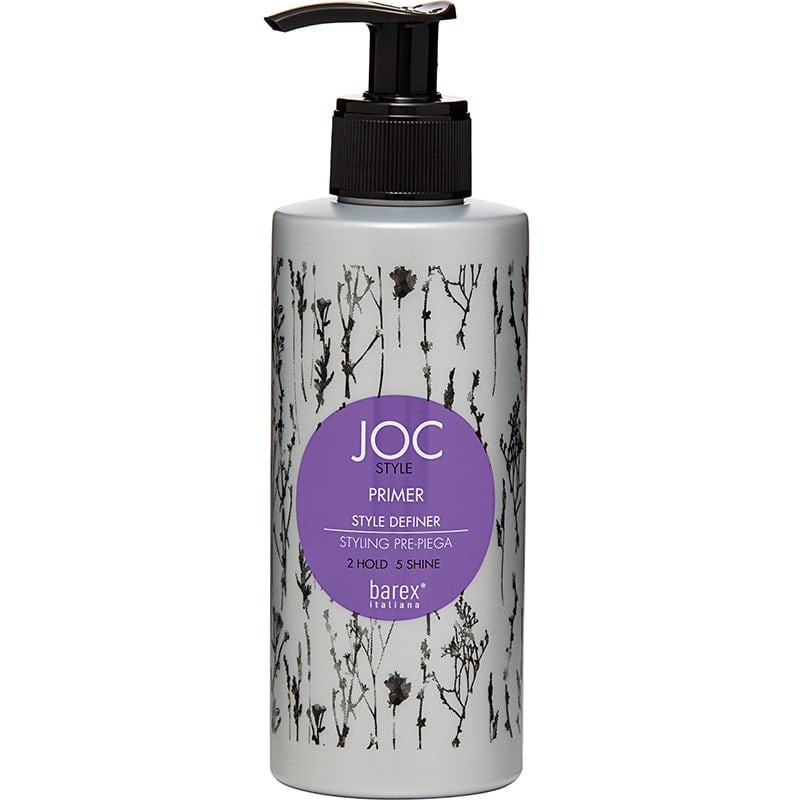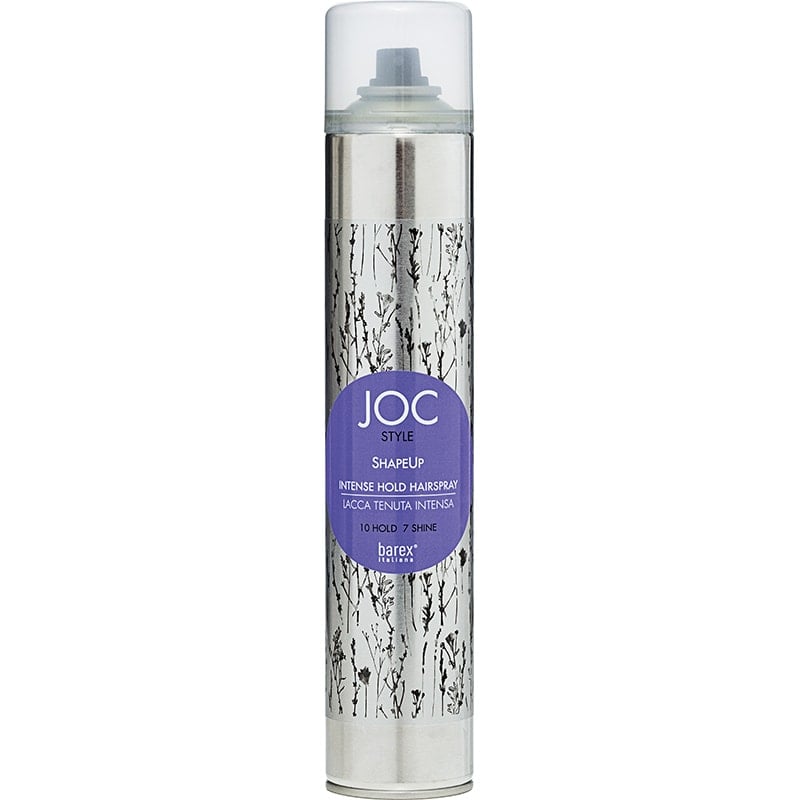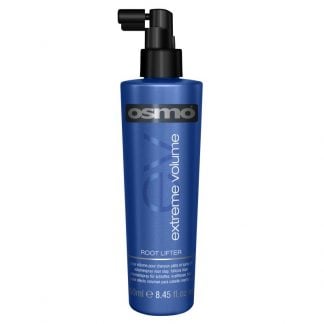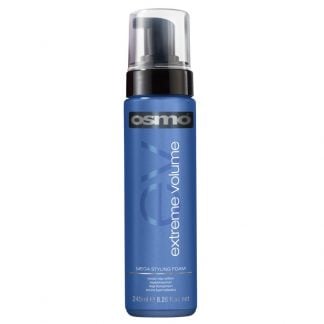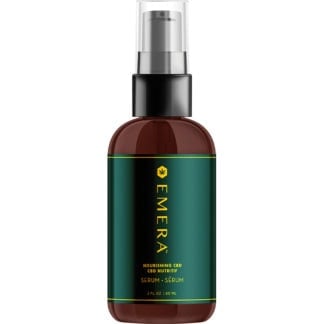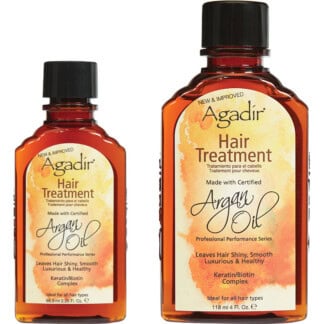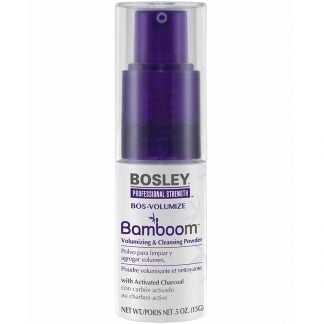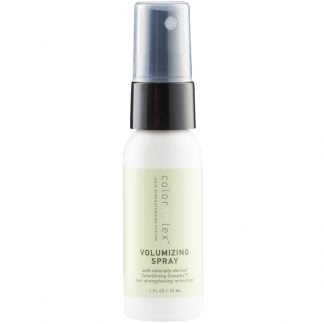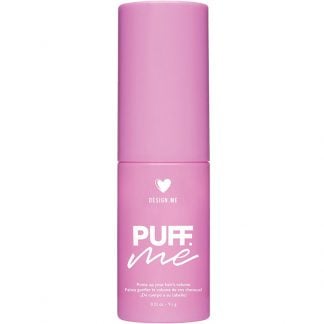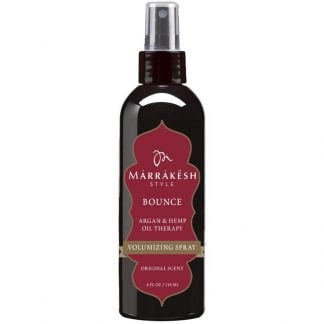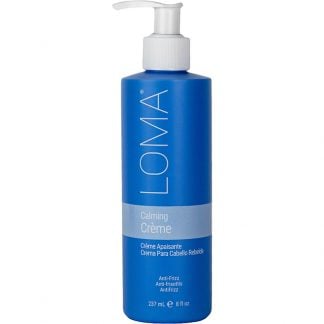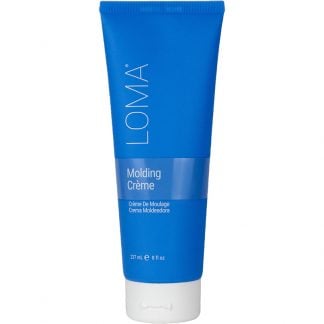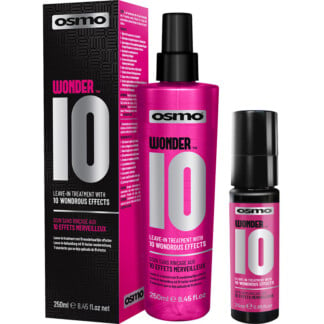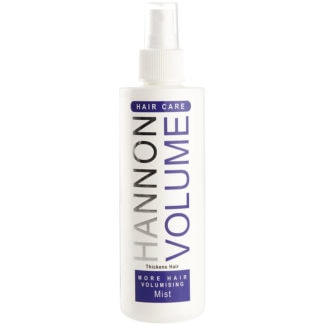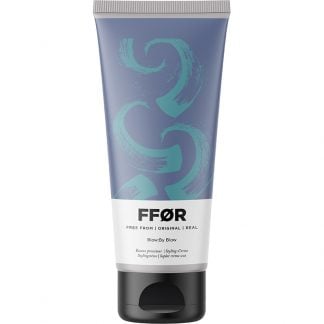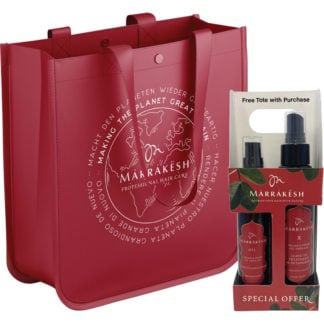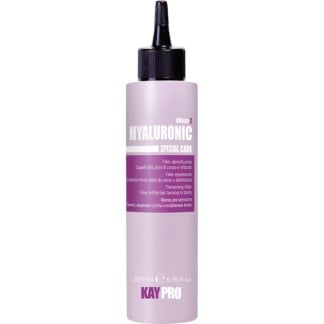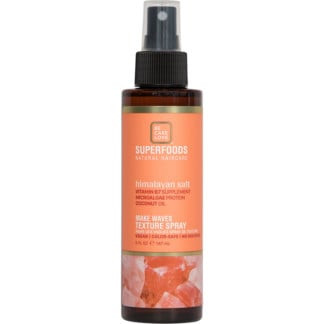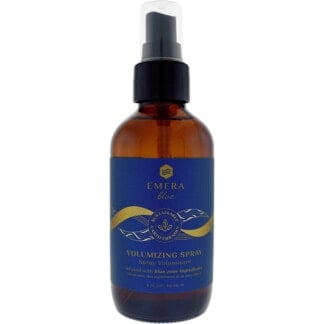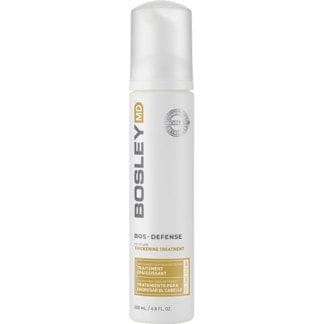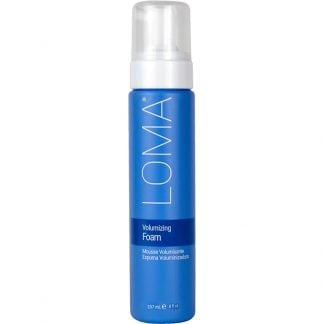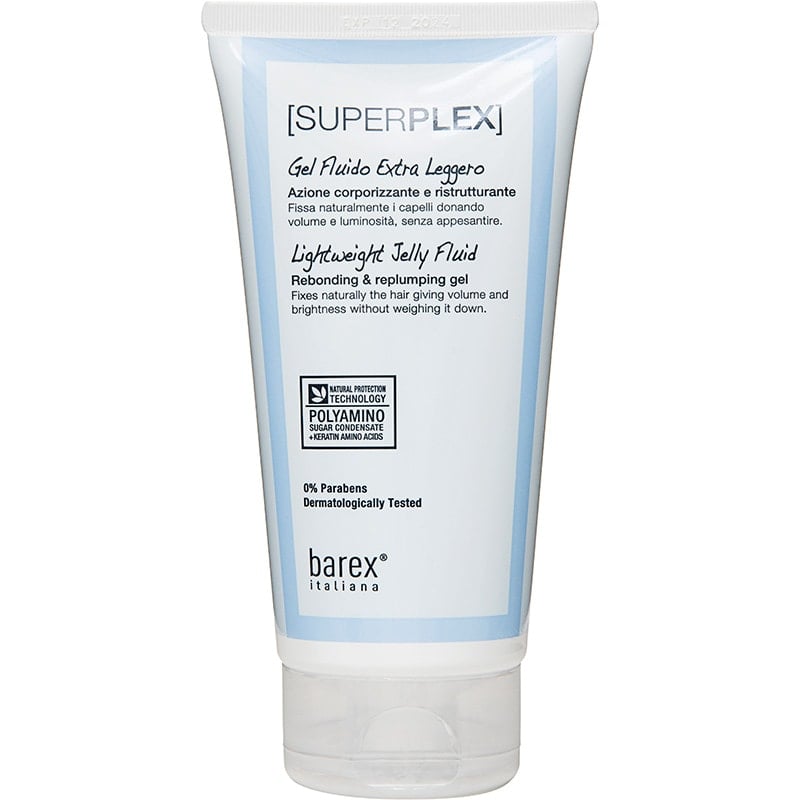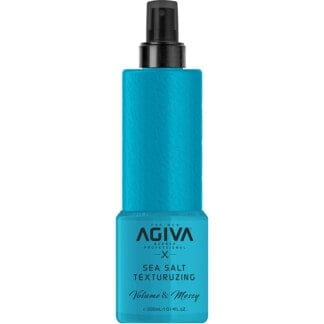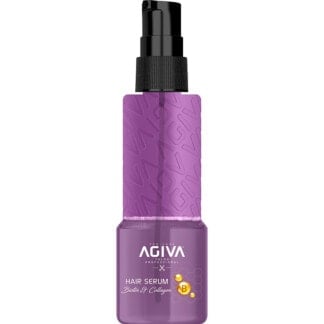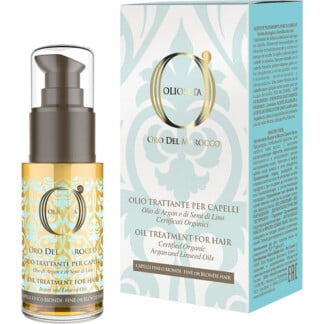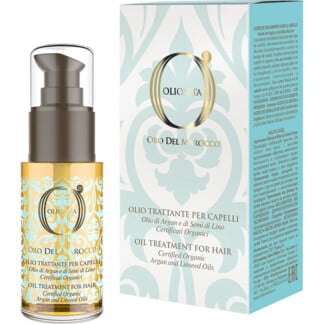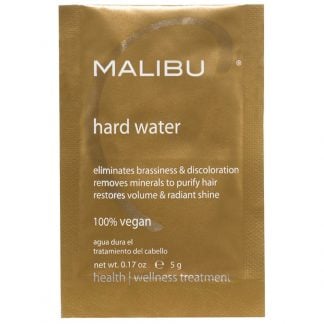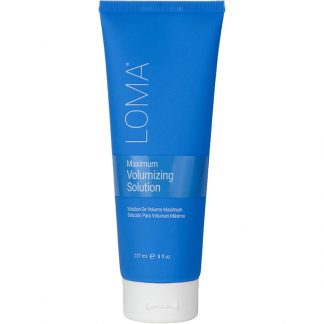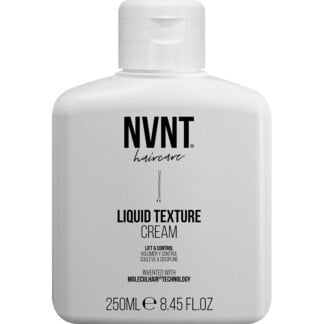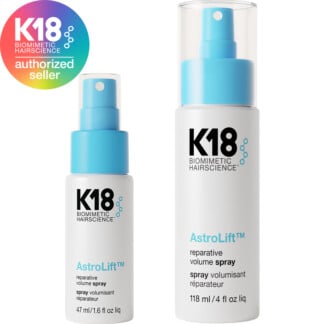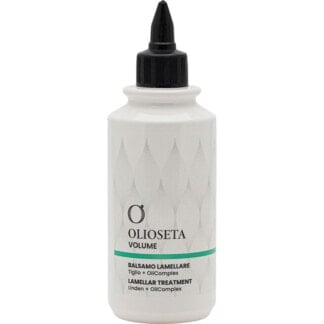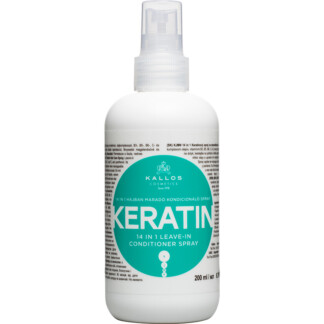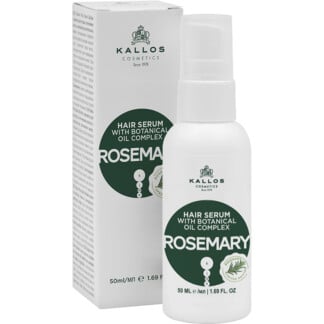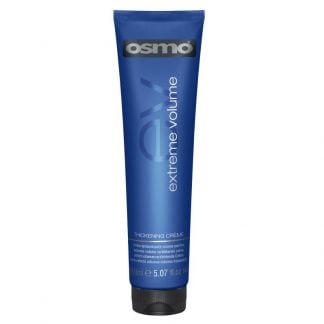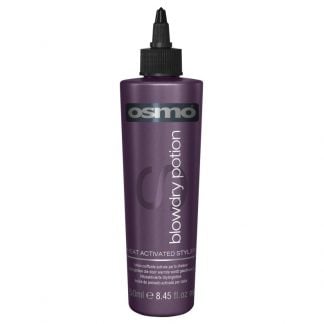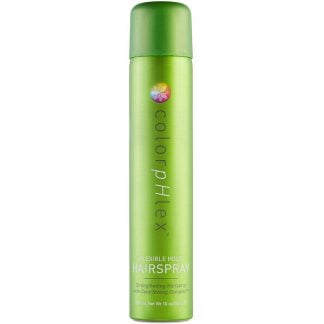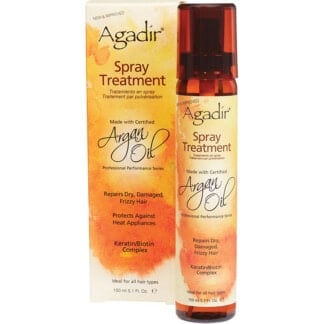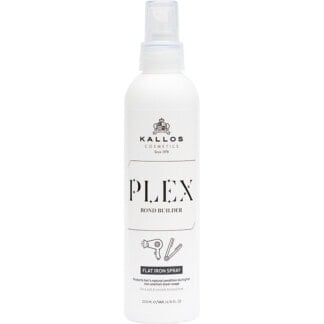
Fine, Limp Hair Causes and the Best Fine, Limp Hair Treatment Products in SA
How to fix fine, limp hair
Fine hair is a common hair type in men and women. Natural oils can weigh down the fine strands, making the hair appear flat, lifeless and limp.
Hair care products formulated for fine hair can give it the volume and bounce it lacks naturally. Gentle styling techniques and short, straight cuts can give body and movement to lifeless hair.
For in-depth information about what causes fine, limp hair, see our fine limp FAQ below.
Fine, limp hair core solutions
Hairhouse Warehouse stocks a wide selection of salon-quality hair care products formulated for fine, limp hair. For the best results, we recommend a four-step regimen using targeted products.
-
OSMO Extreme Volume Banded Pack Duo Shampoo & Conditioner (2 x 1 Litre)
Rated 5.00 out of 5R1,139.60 incl. VAT Add to cart -
Malibu C Mini Malibu Rehab Hard Water Wellness Pack, 2 Sachets
Rated 5.00 out of 5R155.00 incl. VAT Add to cart -
OSMO Wonder 10 Gift Pack, 3 Pieces
Rated 4.00 out of 5R608.10 incl. VAT Add to cart -
Contempora Fine Hair Essential Solution
Rated 5.00 out of 5R468.83 incl. VAT Add to cart -
OSMO Fine Hair Essential Solution
Rated 5.00 out of 5From R746.01 Select options -
Agadir Argan Oil Fine Hair Essential Solution
Rated 0 out of 5R743.34 incl. VAT Add to cart -
K18 Prep + Repair At-Home Duo Set, 2 Pieces
Rated 0 out of 5R1,270.48 incl. VAT Add to cart -
Olioseta Filler Recovery Shampoo & Mask Duo Pack
Rated 0 out of 5R798.82 incl. VAT Add to cart
Best shampoo for fine, limp hair
Step 1 is to use a protein-rich volumising shampoo that delicately injects extra body into the hair to invigorate fine, limp strands. This serves as an instant pick-me-up to liven up the hair and make it more bouncy and full of volume.
-
Bosley Defense for Coloured Normal to Fine Hair Nourishing Shampoo
Rated 5.00 out of 5R71.75 – R726.00 incl. VAT Select options This product has multiple variants. The options may be chosen on the product page -
Bosley Defense for Non-Coloured Normal to Fine Hair Nourishing Shampoo
Rated 5.00 out of 5R71.75 – R300.70 incl. VAT Select options This product has multiple variants. The options may be chosen on the product page -
Contempora Fine Hair Volumizing Shampoo, 1 Litre
Rated 4.80 out of 5R241.90 incl. VAT Add to cart -
DESIGN.ME PUFF.ME Volumizing Shampoo, 1 Litre
Rated 5.00 out of 5R944.25 incl. VAT Add to cart -
CDC Daily Care Volume Shampoo
Rated 5.00 out of 5R127.68 – R287.41 incl. VAT Select options This product has multiple variants. The options may be chosen on the product page -
Agadir Argan Oil Daily Volumizing Shampoo, 366ml
Rated 5.00 out of 5R389.81 incl. VAT Add to cart -
FFØR Re:Vamp for Volume Shampoo
Rated 5.00 out of 5R155.32 – R294.54 incl. VAT Select options This product has multiple variants. The options may be chosen on the product page -
Kerachroma Clenditioner Conditioning Cleanser
Rated 0 out of 5R318.65 – R646.18 incl. VAT Select options This product has multiple variants. The options may be chosen on the product page -
Malibu C Hard Water Wellness Shampoo, 266ml
Rated 5.00 out of 5R377.23 incl. VAT Add to cart -
Marrakesh Kahm Smoothing Shampoo
Rated 5.00 out of 5R128.75 – R475.41 incl. VAT Select options This product has multiple variants. The options may be chosen on the product page -
OSMO Extreme Volume Shampoo
Rated 4.88 out of 5R236.22 – R527.96 incl. VAT Select options This product has multiple variants. The options may be chosen on the product page -
LOMA Dry Shampoo, 200ml
Rated 0 out of 5R383.00 incl. VAT Out of stock -
OSMO Day Two Styler & Dry Shampoo, 150ml
Rated 4.50 out of 5R94.03 incl. VAT Add to cart -
FFØR Purify:ACV Cleanse Detoxify Shampoo, 300ml
Rated 5.00 out of 5R371.81 incl. VAT Add to cart -
Malibu C Un-Do-Goo Shampoo
Rated 5.00 out of 5R38.00 – R377.33 incl. VAT Select options This product has multiple variants. The options may be chosen on the product page -
NEW
OSMO Scalp Therapy Detoxify Shampoo
Rated 4.77 out of 5R97.62 – R437.85 incl. VAT Select options This product has multiple variants. The options may be chosen on the product page -
Hannon More Hair Volumising Shampoo, 250ml
Rated 5.00 out of 5R309.69 incl. VAT Add to cart -
KAYPRO Balance Shampoo for Oily Scalp/Hair, 350ml
Rated 4.67 out of 5R214.50 incl. VAT Add to cart -
KAYPRO Collagen Shampoo for Mature/Porous/Weak Hair, 350ml
Rated 5.00 out of 5R214.24 incl. VAT Add to cart -
KAYPRO Hyaluronic Shampoo for Fine/Limp Hair
Rated 5.00 out of 5R140.85 – R308.87 incl. VAT Select options This product has multiple variants. The options may be chosen on the product page -
KAYPRO Volume Shampoo for Fine Hair
Rated 5.00 out of 5R205.48 – R333.00 incl. VAT Select options This product has multiple variants. The options may be chosen on the product page -
K18 PEPTIDE PREP™ pH Maintenance Shampoo
Rated 4.80 out of 5R481.29 – R2,005.32 incl. VAT Select options This product has multiple variants. The options may be chosen on the product page -
K18 PEPTIDE PREP™ Detox Shampoo
Rated 4.83 out of 5R109.43 – R2,139.01 incl. VAT Select options This product has multiple variants. The options may be chosen on the product page -
OSMO Wonder 10 Shampoo with Bond Builder, 400ml
Rated 5.00 out of 5R430.40 incl. VAT Add to cart -
Manic Panic Hair Freshener Dry Shampoo, 20g
Rated 0 out of 5R415.00 incl. VAT Add to cart -
NVNT Volume Shampoo
Rated 0 out of 5R464.35 – R812.62 incl. VAT Select options This product has multiple variants. The options may be chosen on the product page -
Kallos Hair Pro-Tox Shampoo
Rated 5.00 out of 5R153.00 – R217.50 incl. VAT Select options This product has multiple variants. The options may be chosen on the product page -
Olioseta Volume Weightless Shampoo, 250ml
Rated 0 out of 5R302.09 incl. VAT Add to cart -
NEW
Kallos Rosemary Refreshing Shampoo with Rosemary Oil & Mint Extract, 1 Litre
Rated 0 out of 5R217.50 incl. VAT Add to cart
Conditioner for fine, limp hair
Step 2 is the use of a fine hair conditioner that adds weightless moisture to dull, lifeless strands to create volume, lustre and shine. Closed cuticles keep hair airy, bouncy and full of life.
-
Contempora Fine Hair Volumizing Conditioner, 1 Litre
Rated 5.00 out of 5R278.55 incl. VAT Add to cart -
Hinoki Texturizing Conditioner for Fine & Thinning Hair, 950ml
Rated 4.29 out of 5R109.00 incl. VAT Add to cart -
Bosley Defense for Coloured Normal to Fine Hair Volumizing Conditioner
Rated 5.00 out of 5R71.75 – R765.95 incl. VAT Select options This product has multiple variants. The options may be chosen on the product page -
DESIGN.ME PUFF.ME Volumizing Conditioner
Rated 5.00 out of 5R312.20 – R944.25 incl. VAT Select options This product has multiple variants. The options may be chosen on the product page -
Bosley Defense for Non-Coloured Normal to Fine Hair Volumizing Conditioner
Rated 5.00 out of 5R71.75 – R645.00 incl. VAT Select options This product has multiple variants. The options may be chosen on the product page -
OSMO Extreme Volume Conditioner
Rated 5.00 out of 5R266.46 – R647.29 incl. VAT Select options This product has multiple variants. The options may be chosen on the product page -
Agadir Argan Oil Daily Volumizing Conditioner
Rated 5.00 out of 5R346.68 – R495.85 incl. VAT Select options This product has multiple variants. The options may be chosen on the product page -
FFØR Re:Vamp for Volume Conditioner
Rated 5.00 out of 5R144.00 – R294.54 incl. VAT Select options This product has multiple variants. The options may be chosen on the product page -
Malibu C Hard Water Wellness Conditioner, 266ml
Rated 5.00 out of 5R379.00 incl. VAT Add to cart -
Marrakesh Kahm Smoothing Conditioner
Rated 0 out of 5R144.55 – R494.50 incl. VAT Select options This product has multiple variants. The options may be chosen on the product page -
CDC Daily Care Volume Leave-In Conditioner, 250ml
Rated 0 out of 5R209.09 incl. VAT Add to cart -
LOMA Leave-In Conditioner, 237ml
Rated 4.50 out of 5R445.00 incl. VAT Add to cart -
Malibu C REHABILIT8 Protein Conditioner
Rated 4.50 out of 5R54.90 – R1,139.55 incl. VAT Select options This product has multiple variants. The options may be chosen on the product page -
Hannon More Hair Volumising Conditioner, 250ml
Rated 5.00 out of 5R309.69 incl. VAT Add to cart -
KAYPRO Collagen Conditioner for Mature/Porous/Weak Hair, 350ml
Rated 5.00 out of 5R248.45 incl. VAT Add to cart -
KAYPRO Hyaluronic Spray Conditioner for Fine/Limp Hair, 200ml
Rated 0 out of 5R270.00 incl. VAT Add to cart -
KAYPRO Volume Conditioner for Fine Hair
Rated 5.00 out of 5R201.00 – R345.00 incl. VAT Select options This product has multiple variants. The options may be chosen on the product page -
OSMO Wonder 10 Conditioner with Bond Builder, 400ml
Rated 5.00 out of 5R413.19 incl. VAT Add to cart -
Olioseta Oro Del Marocco Hydrating Conditioner for Fine or Blonde Hair, 250ml
Rated 0 out of 5R349.26 incl. VAT Add to cart -
NVNT Volume Conditioner
Rated 0 out of 5R507.86 – R812.62 incl. VAT Select options This product has multiple variants. The options may be chosen on the product page -
Kallos Hair Pro-Tox Leave-In Conditioner, 250ml
Rated 0 out of 5R182.38 incl. VAT Add to cart
Best hair mask for fine, limp hair
The occasional use of a light, gentle-acting hair mask is the third step that’s recommended to give body to fine, limp hair. It works by stopping excess moisture from adding weight to lifeless hair.
-
Cala Hair Conditioning Mask, 35g
Rated 0 out of 5R85.00 incl. VAT Select options This product has multiple variants. The options may be chosen on the product page -
Bosley Renew Healthy Hair Moisture Masque, 200g
Rated 5.00 out of 5R490.60 incl. VAT Add to cart -
DESIGN.ME GLOSS.ME Hydrating Mask, 250ml
Rated 5.00 out of 5R364.00 incl. VAT Add to cart -
Agadir Argan Oil Moisture Masque with Keratin Protein, 236.6ml
Rated 5.00 out of 5R616.60 incl. VAT Add to cart -
Agiva Biotin & Collagen Hair Mask, 350ml
Rated 4.80 out of 5R188.36 incl. VAT Add to cart -
Kallos Hair Pro-Tox Hair Mask
Rated 5.00 out of 5R119.03 – R232.50 incl. VAT Select options This product has multiple variants. The options may be chosen on the product page -
Kallos Keratin Hot Therapy Mask with Red Pepper Extract, 1 Litre
Rated 0 out of 5R229.33 incl. VAT Add to cart -
NEW
Kallos Rosemary Nourishing Hair Mask with Rosemary & Mint, 1 Litre
Rated 3.00 out of 5R217.50 incl. VAT Add to cart
Hair oils & treatments for fine, limp hair
An array of booster products and treatments, such as hair oil, give even better results. Products that are quickly absorbed by the strands and don’t leave an oily residue are best for fine hair.
-
Brasil Cacau Extreme Repair Cocoa Dose, 15ml
Rated 4.69 out of 5R94.27 incl. VAT Add to cart -
JOC Style PRIMER Style Definer, 200ml
Rated 0 out of 5R345.00 incl. VAT Add to cart -
JOC Style SHAPEUP Intense Hold Hairspray, 500ml
Rated 0 out of 5R281.06 incl. VAT Add to cart -
OSMO Extreme Volume Root Lifter, 250ml
Rated 3.00 out of 5R299.15 incl. VAT Add to cart -
OSMO Extreme Volume Mega Styling Foam, 245ml
Rated 5.00 out of 5R319.94 incl. VAT Add to cart -
EMERA Nourishing CBD Serum, 60ml
Rated 5.00 out of 5R389.00 incl. VAT Out of stock -
Agadir Argan Oil Hair Treatment
Rated 4.90 out of 5R514.38 – R818.86 incl. VAT Select options This product has multiple variants. The options may be chosen on the product page -
Bosley Volumize Bamboom Volumizing & Cleansing Powder, 15g
Rated 3.00 out of 5R279.60 incl. VAT Add to cart -
ColorpHlex Volumizing Spray, 30ml
Rated 4.50 out of 5R73.85 incl. VAT Add to cart -
DESIGN.ME PUFF.ME Volumizing Powder Pump – Normal/Thick Hair, 9.1g
Rated 5.00 out of 5R311.25 incl. VAT Add to cart -
Marrakesh Style Bounce Volumizing Spray, 118ml
Rated 4.00 out of 5R149.85 incl. VAT Add to cart -
LOMA Calming Crème, 237ml
Rated 4.00 out of 5R367.15 incl. VAT Add to cart -
LOMA Molding Crème, 237ml
Rated 0 out of 5R540.00 incl. VAT Add to cart -
OSMO Wonder 10 Leave-In Treatment
Rated 4.62 out of 5R101.71 – R385.49 incl. VAT Select options This product has multiple variants. The options may be chosen on the product page -
Hannon More Hair Volumising Mist, 250ml
Rated 5.00 out of 5R309.69 incl. VAT Add to cart -
FFØR Blow:By Blow Styling Crème, 200ml
Rated 5.00 out of 5R373.31 incl. VAT Add to cart -
Marrakesh Oil Hair Styling Elixir & X Leave-In Caddy Set, 2 Pieces
Rated 5.00 out of 5R395.00 incl. VAT Add to cart -
KAYPRO Hyaluronic Filler for Fine/Limp Hair, 200ml
Rated 0 out of 5R220.00 incl. VAT Add to cart -
Be Care Love SuperFoods Make Waves Texture Spray, 147ml
Rated 0 out of 5R458.95 incl. VAT Add to cart -
EMERA BLUE Volumizing Spray, 118ml
Rated 0 out of 5R241.00 incl. VAT Add to cart -
Bosley Defense for Coloured Normal to Fine Hair Thickening Treatment, 200ml
Rated 0 out of 5R765.95 incl. VAT Add to cart -
LOMA Volumizing Foam, 237ml
Rated 0 out of 5R348.00 incl. VAT Out of stock -
Superplex Lightweight Jelly Fluid, 150ml
Rated 0 out of 5R246.00 incl. VAT Add to cart -
Agiva Sea Salt Texturizing Spray, 300ml
Rated 4.56 out of 5R142.50 incl. VAT Add to cart -
Agiva Biotin & Collagen Hair Serum, 100ml
Rated 4.40 out of 5R188.00 incl. VAT Add to cart -
Olioseta Oro Del Marocco Oil Treatment for Fine or Blonde Hair, 30ml
Rated 5.00 out of 5R327.59 incl. VAT Add to cart -
Olioseta Oro Del Marocco Oil Treatment for Hair, 30ml
Rated 3.00 out of 5R342.89 incl. VAT Add to cart -
Malibu C Hard Water Sachet, 5g
Rated 5.00 out of 5R93.00 incl. VAT Add to cart -
LOMA Maximum Volumizing Solution, 237ml
Rated 0 out of 5R348.00 incl. VAT Add to cart -
NVNT Liquid Texture Cream, 250ml
Rated 0 out of 5R429.72 incl. VAT Add to cart -
K18 AstroLift Reparative Volume Spray
Rated 4.33 out of 5R358.50 – R649.35 incl. VAT Select options This product has multiple variants. The options may be chosen on the product page -
Olioseta Volume Lamellar Treatment, 250ml
Rated 0 out of 5R410.42 incl. VAT Add to cart -
NEW
Kallos 14 in 1 Keratin Hair Treatment Spray, 200ml
Rated 0 out of 5R165.00 incl. VAT Out of stock -
NEW
Kallos Rosemary Hair Serum with Botanical Oil Complex, 50ml
Rated 0 out of 5R165.00 incl. VAT Add to cart
Heat protection for fine, limp hair
Look out for volumising heat protection serums, creams and sprays that protect the hair without locking in too much moisture.
-
OSMO Extreme Volume Thickening Crème, 150ml
Rated 3.00 out of 5R206.15 incl. VAT Add to cart -
OSMO Blow Dry Potion, 250ml
Rated 4.78 out of 5R223.00 incl. VAT Add to cart -
ColorpHlex Reconstructive Aerosol Hairspray, 296ml
Rated 3.00 out of 5R350.30 incl. VAT Add to cart -
Agadir Argan Oil Spray Treatment, 150ml
Rated 4.88 out of 5R578.17 incl. VAT Add to cart -
Olioseta Oro Del Marocco Oil Treatment for Fine or Blonde Hair, 30ml
Rated 5.00 out of 5R327.59 incl. VAT Add to cart -
Olioseta Oro Del Marocco Oil Treatment for Hair, 30ml
Rated 3.00 out of 5R342.89 incl. VAT Add to cart -
Kallos Plex Bond Builder Flat Iron Spray, 200ml
Rated 0 out of 5R169.25 incl. VAT Add to cart
Fine, limp hair FAQ
If your hair is fine, thinning and difficult to manage, here are key FAQs that can help you find the right styling and hair care solutions for your hair type.
Causes
Fine, limp hair naturally consists of individual strands that are thin in diameter compared to other hair types. As each strand has its own oil gland, fine hair tends to be heavier than other hair types.
Using hair care products that are rich in oils and not specially formulated for fine hair can exacerbate the problem of managing dull, lifeless hair.
Fine, limp hair causes day-to-day styling challenges that can easily be resolved by using products that promote body and bounce.
Dull, lifeless hair lacks moisture, volume and lustre. The excessive use of hot styling tools is a common culprit. Harsh, chemically formulated hair care products are often to blame.
The regular use of hair colouring products containing bleach, ammonia and PPD can strip the nutrients from the hair. When that happens, the hair looks dull and lifeless.
Try natural hair colourants and conditioners instead. They can be as effective as chemical products, but are more nourishing and gentler to the hair shafts.
Fine hair is different to thin hair. Genetics, a poor diet, certain medications, age and a wide range of illnesses and auto-immune diseases can lead to hair loss, which, in turn, results in thin hair.
Thinning hair requires a more holistic treatment and restoration plan that typically involves the use of hair care products, nutritional supplements and massage.
Hair loss treatments, which stimulate growth, can be effective, especially when used in tandem with gentle hair care products.
Vitamins and supplements, such as collagen, biotin, selenium, zinc, copper and vitamins D3, B12 and C, are known to promote hair growth.
Vigorous scalp massages can stimulate blood circulation and create the optimum conditions for a full, healthy head of hair.
Fine hair refers to the structure of the hair strands rather than the volume of hair on the scalp. The strands are comparatively thin. The hair’s texture is soft and silky.
People with fine hair can have lots of hair or hair that’s thinning. This is either due to a genetic predisposition for hair loss or any other cause of thin hair mentioned above.
As a general rule, hair strands with a diameter of less than 70 microns are considered fine.
The key difference between fine and thinning hair is volume. When the hair is parted and reveals lots of scalp, the hair is thin and sparse.
You may have lots of fine hair that closely covers the scalp. Alternatively, it can be sparse.
There’s not much difference between fine hair and greasy hair. Fine hair has more strands per square centimetre of scalp and each stand has its own oil gland, so fine hair is associated with high oil production.
As a result, fine hair can become greasy more quickly than other hair types. That said, people with thick hair can get greasy hair if they don’t wash their hair regularly.
Tips
A multi-pronged approach, using only quality hair care products, is required to restore limp, lifeless hair.
The application of pre-shampoo treatments can add volume to fine hair. They are most effective when used in conjunction with volumising shampoos and conditioners.
Thereafter, boosters and finishers can provide more texture, shine and bounce to the hair. Ideally, they should be part of the daily hair care regimen – that’s how to add body to limp hair.
With that in mind, hair care combination packs offer the best approach. They contain all the essential hair care products formulated for dull, lifeless hair. Combination packs are often more cost effective than buying individual products.
Fine hair has a naturally high oil content. As a result, fine thin hair should be shampooed and conditioned on a daily basis.
It’s also a good idea to use styling oils, serums and gels sparingly. Invest in volumising hair products formulated for fine thin hair.
The best haircuts for fine, limp hair are straight cuts that end just below the ear or chin. Bobbed hair creates an illusion of thickness.
Short cuts makes the hair lighter, more voluminous and full of life. Any short blunt cuts are the best haircuts for thinning hair.
Ideally, fine hair should not be layered. It makes the hair look thin, straggly and sparse. Short, straight cuts reduce the weight of the hair, allowing it to swirl and bounce with every movement.
Chunky haircuts like bobs, lobs and pixie crops are popular cuts for fine or thinning hair.
Besides the limp hair home remedies covered in the earlier FAQs, styling hair to add volume is a great way to mitigate the effects of thin, fine hair.
Styling limp hair takes a bit of time and creativity but, when done correctly, it can add bounce, body and shine.
Here are a few styling tips for thin, fine hair:
- Apply volumising mousse to the hair before blow-drying it.
- As you blow-dry the hair, repeatedly run the fingers across the scalp to create more volume at the roots.
- Use a round styling brush to lift the hair up and away from the scalp before blow-drying it on a medium heat setting.
- Consider curling fine, limp hair to add movement and bounce.
Products
Hair thickening creams and heat protection treatments, alongside volumising shampoos and conditioners that don’t contain too much oil, are key products for adding volume to hair.
Hairhouse Warehouse has a comprehensive selection of limp hair products that contain ingredients that add texture, thickness and body to flat hair.
Yes, it is. In fact, colouring thinning hair can inject much-needed volume and body. The hair colouring process can be slightly abrasive to the hair shaft, causing it to plump out and appear thicker.
The extra layer caused by the colour on the hair shaft can also act like a protective sheath to prevent the strand from breaking.
Lighter shades of hair colour that don’t contrast sharply with the scalp work best with fine, thinning hair. If you prefer darker shades, try adding highlights or lowlights to reduce the contrast between hair and scalp.
There are a few easy ways to get thicker hair, one of which is to use a good volumising shampoo, followed by volumising conditioner.
Adding gel, wax or pomade, and crunching the hair in an upward motion makes the hair stand more erect, and gives the impression of a thicker head of hair. That, together with blow drying the hair upside down, answers the question of how to give fine hair more body.
Hair extensions, wigs and clip-ons are effective in hiding thinning hair. When applied correctly, they can make limp, tired hair look thick and healthy. They can also conceal any bald spots.
The trick is to find an extension that doesn’t damage the hair, leave it matted or tangled or cause discomfort and even pain. Tape-in hair extensions and clip-ons are recommended for fine, thinning hair.
Hairhouse Warehouse features dozens of synthetic and human hair extensions in a variety of styles that include straight strands, curly and wavy extensions, fringes, pony tails and buns.


